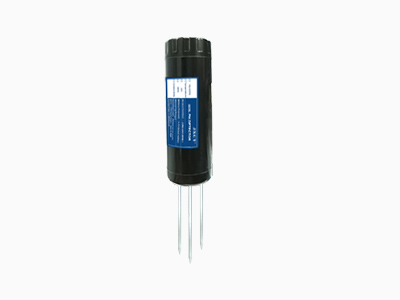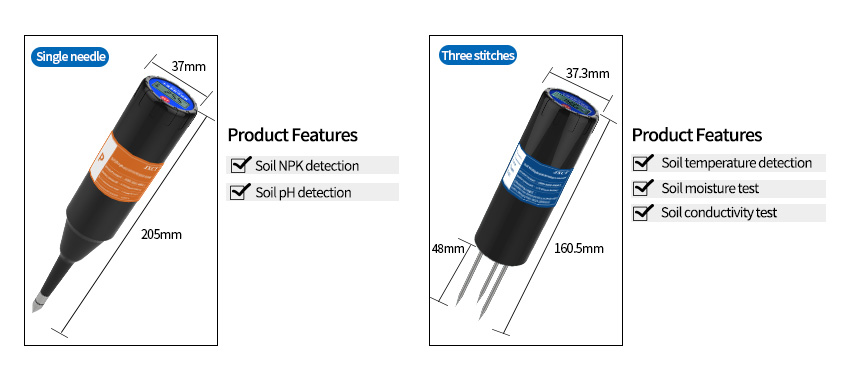Introduction: Precision farming, also known as precision agriculture, is an innovative approach that utilizes technology to optimize agricultural practices. One of the key components of precision farming is the use of soil sensors to monitor soil conditions, particularly in terms of moisture content and nutrient levels. By providing accurate real-time data, soil sensors enable farmers to make data-driven decisions in irrigation and fertilization, leading to increased efficiency, improved crop yield, and sustainable farming practices. This article will explore the role of soil sensors in precision farming and the advantages they offer in optimizing irrigation and fertilization.

Understanding Soil Sensors:
Soil sensors are devices that are specifically designed to measure and monitor various soil parameters, including moisture content, temperature, electrical conductivity, and nutrient levels. These sensors are embedded in the soil and provide continuous data on the soil conditions. The data collected by soil sensors is transmitted wirelessly to a central system, enabling farmers to access real-time information about the soil conditions in their fields.
Optimizing Irrigation:
One of the primary applications of soil sensors in precision farming is optimizing irrigation practices. Traditional irrigation methods often rely on predetermined schedules or subjective assessments, which can result in overwatering or underwatering. Soil sensors, however, provide accurate measurements of soil moisture content, allowing farmers to tailor irrigation schedules to the specific needs of the crops. By only irrigating when the soil moisture levels indicate a need, farmers can avoid overwatering, conserve water resources, and prevent crop stress. This precise irrigation management not only promotes sustainable water usage but also improves crop health and ultimately increases yield.
Efficient Fertilization:
Proper fertilization is crucial for promoting healthy plant growth and maximizing crop yield. Soil sensors play a vital role in optimizing fertilization practices by providing real-time information on nutrient levels in the soil. By monitoring the nutrient content, farmers can precisely adjust the application of fertilizers, ensuring that crops receive the necessary nutrients without excess or deficiency. This targeted approach prevents nutrient runoff, reduces fertilizer wastage, and minimizes environmental pollution. By optimizing fertilization practices with the help of soil sensors, farmers can achieve maximum nutrient efficiency and improve crop productivity.
Site-Specific Management:
Every field is unique, with variations in soil characteristics, topography, and crop requirements. Soil sensors enable site-specific management, allowing farmers to tailor their irrigation and fertilization practices to the specific conditions of each field. By deploying soil sensors across different areas of a field, farmers can gather data on soil moisture and nutrient levels at a granular level. This information enables them to create prescription maps, which guide them in applying water and nutrients precisely where they are needed, based on the specific requirements of each portion of the field. Site-specific management not only optimizes resource allocation but also maximizes crop yield potential.
Data-Driven Decision Making:
The data collected by soil sensors provides a wealth of information that can be utilized for data-driven decision making. Farmers can analyze the data collected over time, identify trends, and make informed decisions regarding irrigation and fertilization practices. By integrating soil sensor data with other relevant data sources such as weather forecasts and crop growth models, farmers can develop predictive models and optimize their decision-making process. This data-driven approach ensures that farmers can make timely adjustments to their irrigation and fertilization practices, leading to improved efficiency, increased crop yield, and reduced environmental impact.
Challenges and Future Developments:
While soil sensors have proven to be valuable tools in precision farming, there are still challenges to be addressed. One such challenge is the calibration and maintenance of soil sensors to ensure accurate and reliable data. Additionally, the cost of soil sensors can be a barrier to adoption for some farmers. However, ongoing advancements in technology are leading to improved sensor accuracy, affordability, and ease of use. The integration of soil sensors with other precision farming technologies, such as remote sensing and GPS, holds great potential in further enhancing the effectiveness of precision farming practices.

Conclusion:
Precision farming, enabled by the use of soil sensors, is revolutionizing the way irrigation and fertilization are managed in agriculture. By providing real-time data on soil moisture content and nutrient levels, soil sensors allow for precise irrigation and fertilization practices. This optimization leads to increased efficiency, improved crop yield, and sustainable farming practices. As technology continues to advance, the adoption of soil sensors in precision farming is expected to increase, contributing to the future of agriculture by promoting resource conservation, reducing environmental impact, and ensuring food security in a world with growing population and changing climate.
